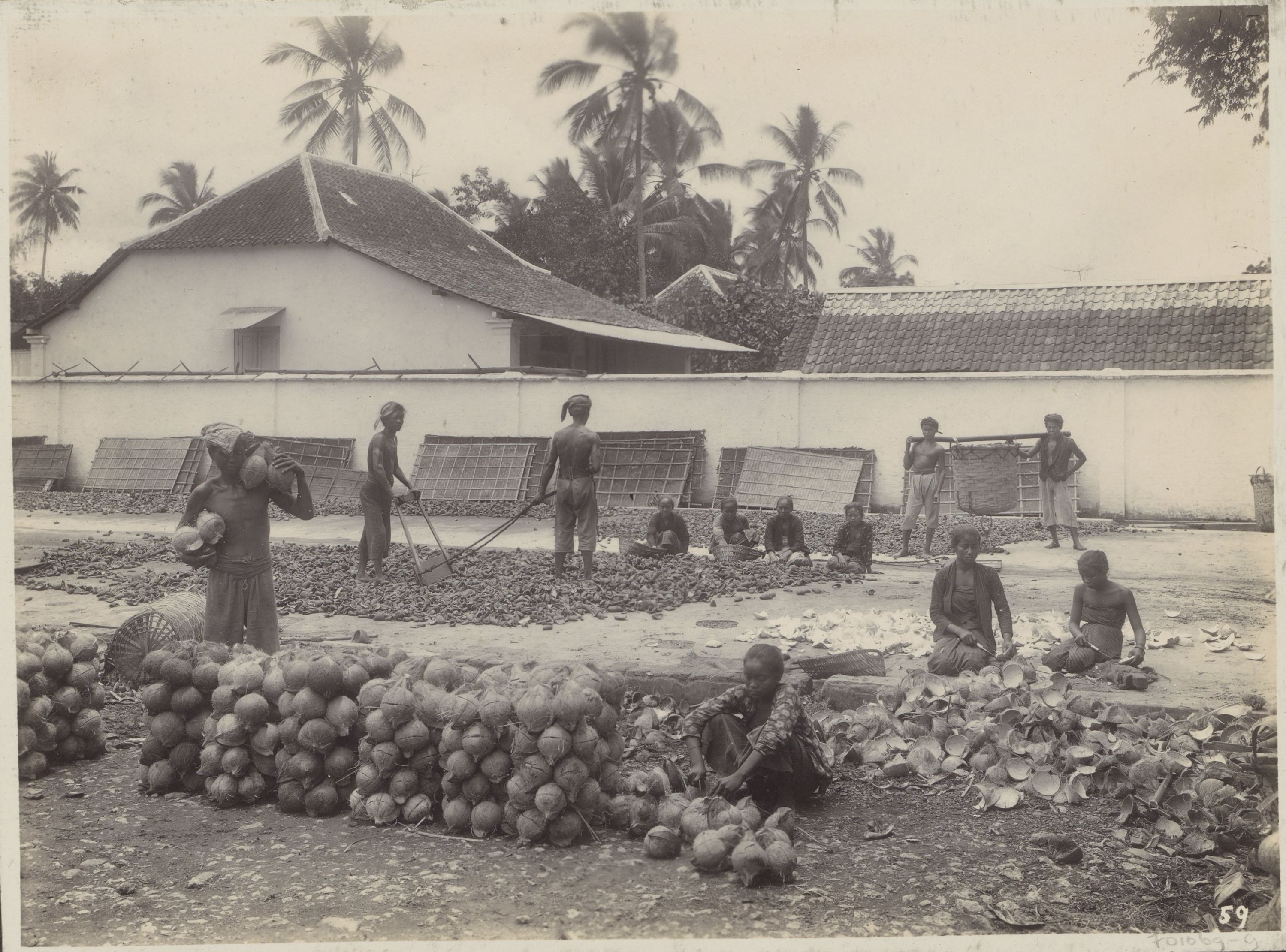Copra Production in the Dutch East Indies

Annotation
This photograph, taken by Onnes Kurkdjian, depicts men and women preparing copra in the Dutch East Indies in the early twentieth century. Copra is dried coconut kernels. Once sufficiently dried, laborers then crush the copra to expel its valuable coconut oil. The extracted oil is used for a variety of different products, such as soaps and cosmetics. The residue produced from extracting the oil, known as copra cake or copra meal, is used as animal feed. Copra became a commercially important product for European merchants in the mid-to-late nineteenth century. The large piles of drying kernels and harvested coconuts in Kurkdjian's photograph highlight the economic importance of copra and the scale of its production. The photograph also highlights the gendered division of labor in copra production as the women husk the coconuts and sort the dried kernels into baskets, while the men break up the drying kernels and handle the copra’s transportation.
Credits
Onnes Kurkdjian, Mannen en vrouwen bereiden kopra in Nederlands-Indië, 1912, RP-F-F01069-G,